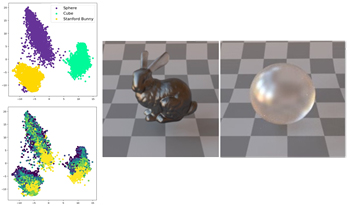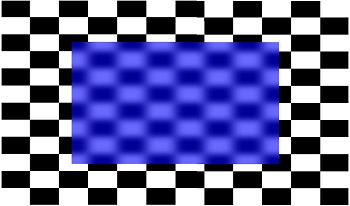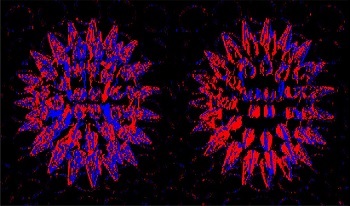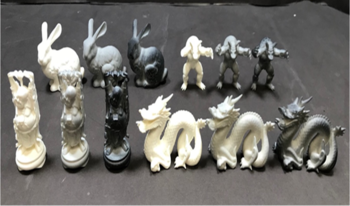
One central challenge in modeling material appearance perception is the creation of an explainable and navigable representation space. In this study, we address this by training a StyleGAN2-ADA deep generative model on a large-scale, physically based rendered dataset containing translucent and glossy objects with varying intrinsic optical parameters. The resulting latent vectors are analyzed through dimensionality reduction, and their perceptual validity is assessed via psychophysical experiments. Furthermore, we evaluate the generalization capabilities of StyleGAN2-ADA on unseen materials. We also explore inverse mapping techniques from latent vectors reduced by principal component analysis back to original optical parameters, highlighting both the potential and the limitations of generative models for explicit, parameter-based image synthesis. A comprehensive analysis provides significant insights into the latent structure of gloss and translucency perception and advances the practical application of generative models for controlled material appearance generation.

Translucency is an appearance attribute, which primarily results from subsurface scattering of light. The visual perception of translucency has gained attention in the past two decades. However, the studies mostly address thick and complex 3D objects that completely occlude the background. On the other hand, the perception of transparency of flat and thin see-through filters has been studied more extensively. Despite this, perception of translucency in see-through filters that do not completely occlude the background remains understudied. In this work, we manipulated the sharpness and contrast of black-and-white checkerboard patterns to simulate the impression of see-through filters. Afterward, we conducted paired-comparison psychophysical experiments to measure how the amount of background blur and contrast relates to perceived translucency. We found that while both blur and contrast affect translucency, the relationship is neither monotonic, nor straightforward.

The visual mechanisms behind our ability to distinguish translucent and opaque materials is not fully understood. Disentanglement of the contributions of surface reflectance and subsurface light transport to the still image structure is an ill-posed problem. While the overwhelming majority of the works addressing translucency perception use static stimuli, behavioral studies show that human observers tend to move objects to assess their translucency. Therefore, we hypothesize that translucent objects appear more translucent and less opaque when observed in motion than when shown as still images. In this manuscript, we report two psychophysical experiments that we conducted using static and dynamic visual stimuli to investigate how motion affects perceived translucency.

Gloss perception is a complex psychovisual phenomenon, whose mechanisms are not yet fully explained. Instrumentally measured surface reflectance is usually poor predictor of human perception of gloss. The state-of-the-art studies demonstrate that, in addition to surface reflectance, object's shape and illumination geometry also affect the magnitude of gloss perceived by the human visual system (HVS). Recent studies attribute this to image cues – the specific regularities in image statistics that are generated by a combination of these physical properties, and that, in their part, are proposedly used by the HVS for assessing gloss. Another study has recently demonstrated that subsurface scattering of light is an additional factor that can play the role in perceived gloss, but the study provides limited explanation of this phenomenon. In this work, we aimed to shed more light to this observation and explain why translucency impacts perceived gloss, and why this impact varies among shapes. We conducted four psychophysical experiments in order to explore whether image cues typical for opaque objects also explain the variation of perceived gloss in translucent objects and to quantify how these cues are modulated by the subsurface scattering properties. We found that perceived contrast, coverage area, and sharpness of the highlights can be combined to reliably predict perceived gloss. While sharpness is the most significant cue for assessing glossiness of spherical objects, coverage is more important for a complex Lucy shape. Both of these observations propose an explanation why subsurface scattering albedo impacts perceived gloss.

We propose a method of reproducing perceptual translucency in three-dimensional printing. In contrast to most conventional methods, which reproduce the physical properties of translucency, we focus on the perceptual aspects of translucency. Humans are known to rely on simple cues to perceive translucency, and we develop a method of reproducing these cues using the gradation of surface textures. Textures are designed to reproduce the intensity distribution of the shading and thus provide a cue for the perception of translucency. In creating textures, we adopt computer graphics to develop an image-based optimization method. We validate the effectiveness of the method through subjective evaluation experiments using three-dimensionally printed objects. The results of the validation show that the proposed method using texture is effective in improving perceptual translucency.

Translucency optically results from subsurface light transport and plays a considerable role in how objects and materials appear. Absorption and scattering coefficients parametrize the distance a photon travels inside the medium before it gets absorbed or scattered, respectively. Stimuli produced by a material for a distinct viewing condition are perceptually non-uniform w.r.t. these coefficients. In this work, we use multi-grid optimization to embed a non-perceptual absorption-scattering space into a perceptually more uniform space for translucency and lightness. In this process, we rely on A (alpha) as a perceptual translucency metric. Small Euclidean distances in the new space are roughly proportional to lightness and apparent translucency differences measured with A. This makes picking A more practical and predictable, and is a first step toward a perceptual translucency space.